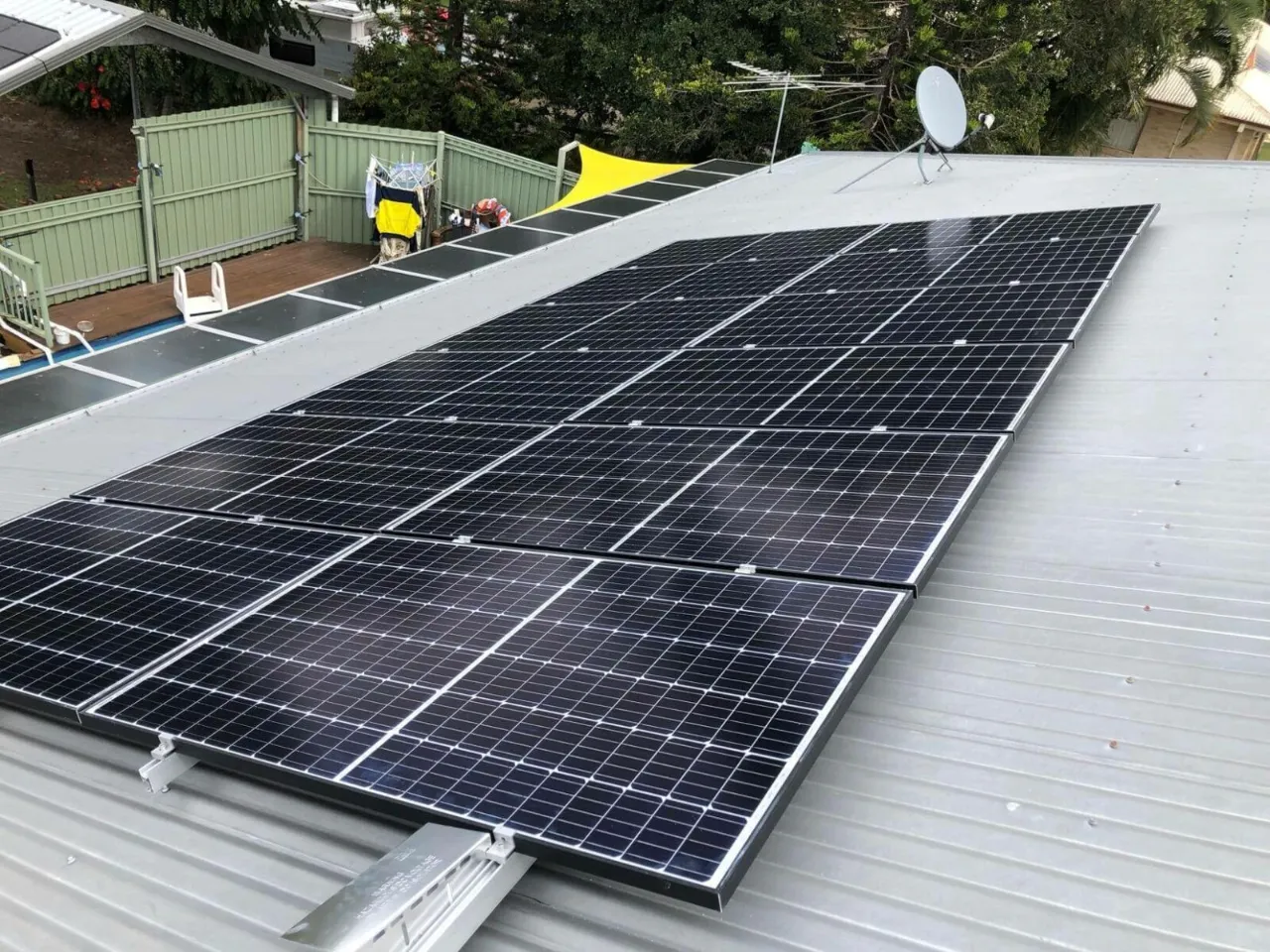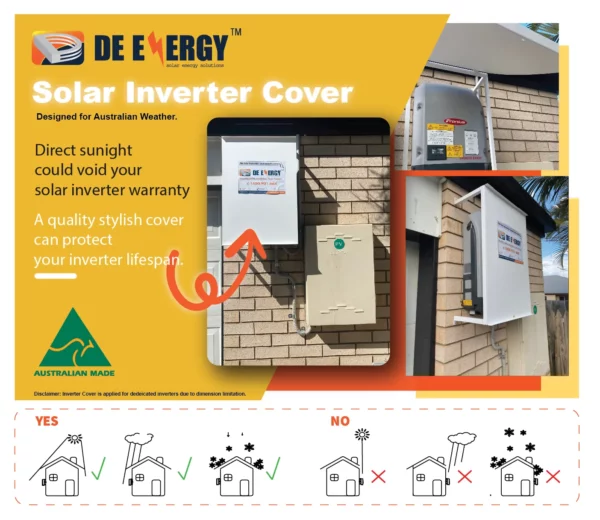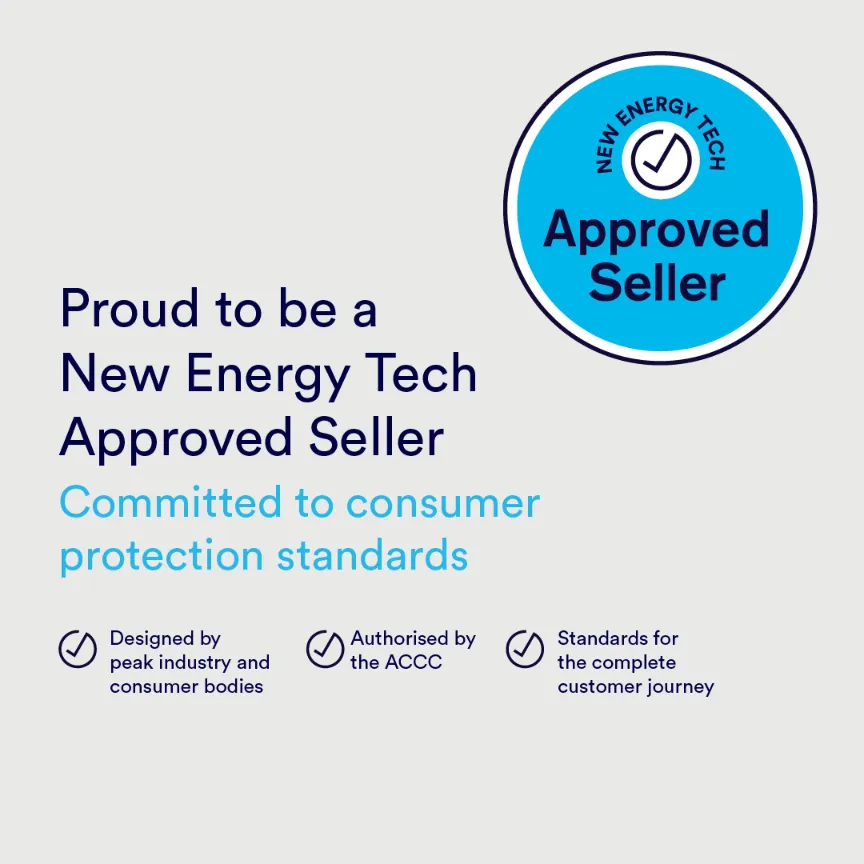Queensland, with its sunny weather and long daylight hours, is the perfect place to invest in solar energy. A 6.6 kW solar system is a popular choice for homeowners who want to reduce their electricity bills and lower their carbon footprint. In this blog post, we’ll cover everything you need to know about a 6.6 kW solar system, including how it works, how much it costs, and how much energy it can generate.
How does a 6.6 kW solar system work?
A 6.6 kW solar system consists of solar panels, an inverter, and a mounting system. The solar panels are typically made of silicon and are designed to absorb sunlight. When sunlight hits the solar panels, the energy from the photons in the light is absorbed by the silicon atoms in the panels. This creates an electrical charge which is then sent to the inverter.
The inverter is a device that converts the DC (direct current) electricity generated by the solar panels into AC (alternating current) electricity that can be used to power your home. This AC electricity is then sent to your home’s electrical panel and distributed throughout your home to power your lights, appliances, and other electrical devices.
If your solar system generates more electricity than you use, the excess energy can be stored in a battery for use later or sold back to the grid. If you don’t have a battery storage system, the excess electricity is automatically sold back to your energy retailer at a feed-in tariff rate, which varies depending on your retailer.
Benefits of a 6.6 kW solar system
There are many benefits of installing a 6.6 kW solar system in your Queensland home, including:
- Cost savings: By generating your own electricity, you can reduce your reliance on the grid and lower your electricity bills. The amount of money you can save depends on your energy usage, the size of your solar system, and the feed-in tariff rate offered by your energy retailer.
- Environmental benefits: Solar energy is a clean and renewable source of energy that produces no greenhouse gas emissions. By installing a 6.6 kW solar system, you can reduce your carbon footprint and contribute to a cleaner environment.
- Increased property value: A solar system can increase the value of your home by up to 4%, according to a study by the Lawrence Berkeley National Laboratory.
- Energy independence: With a solar system, you’re not reliant on the grid and the power outages that can come with it. You have the ability to generate your own power and be self-sufficient.
- Government incentives: In Queensland, homeowners can take advantage of government incentives such as the Small-Scale Renewable Energy Scheme (SRES), which provides a rebate for the purchase of solar systems.
Factors that affect the cost of a 6.6 kW solar system
The cost of a 6.6 kW solar system can vary depending on several factors. These include:
- Size and type of panels: The size and type of solar panels you choose will affect the cost of your solar system. Monocrystalline panels are more expensive than polycrystalline panels, but they’re also more efficient and durable.
- Location: The location of your home can affect the cost of your solar system. Homes in remote areas may require additional equipment and installation costs.
- Roof type: The type of roof you have can also affect the cost of your solar system. A flat roof may require additional equipment and installation costs, while a pitched roof may be easier to install on.
- Inverter type: The type of inverter you choose can also affect the cost of your solar system. String inverters are less expensive but less efficient than microinverters, which are more expensive but more efficient.
- Battery storage: If you choose to install a battery storage system with your solar system, this will add to the overall cost.
- Installation costs: The cost of installation can vary depending on the complexity of your installation, the size of your solar system, and the cost of labour in your area.
How much energy can a 6.6 kW solar system generate?
A 6.6 kW solar system can generate an average of 28 kWh per day, or 10,220 kWh per year, depending on factors such as location and weather conditions. This is enough energy to power an average Australian household, which uses approximately 20 kWh per day. However, your actual energy production will depend on factors such as the orientation and tilt of your panels, shading, and weather conditions.
How much does a 6.6 kW solar system cost?
The cost of a 6.6 kW solar system can vary depending on the factors mentioned above. On average, a 6.6 kW solar system can cost between $6,000 to $10,000, including installation. However, government incentives such as the Small-Scale Renewable Energy Scheme can help reduce the cost.
Maintenance and upkeep of a 6.6 kW solar system
A 6.6 kW solar system requires minimal maintenance, but it’s important to keep it clean and free from debris to ensure maximum energy production. You may need to hose down the panels occasionally to remove any dirt or debris that may be blocking sunlight. It’s also important to have your solar system inspected by a professional every few years to ensure it’s functioning properly.
Conclusion
Investing in a 6.6 kW solar system can provide numerous benefits for Queensland homeowners, including cost savings, environmental benefits, and energy independence. While the cost of installation can vary, the long-term benefits can outweigh the initial investment. By understanding how a solar system works, the factors that affect its cost, and how much energy it can generate, you can make an informed decision about whether a 6.6 kW solar system is right for your home.



